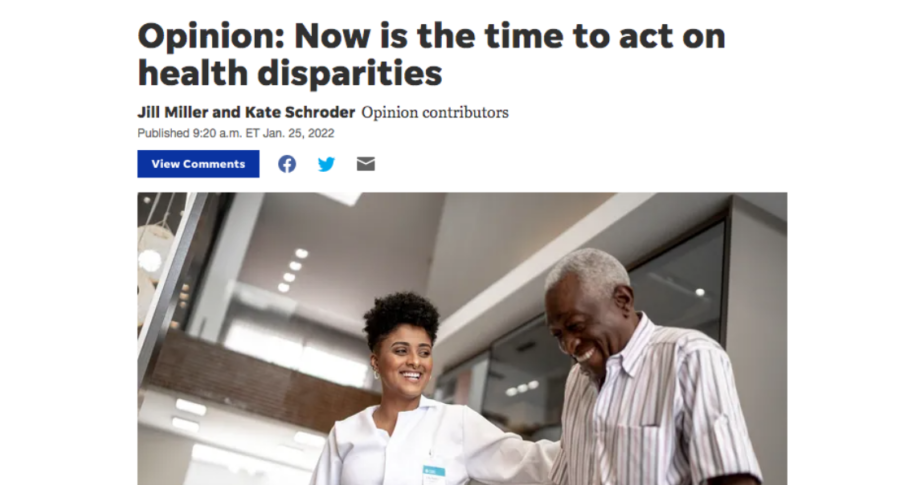
Kate Schroder is president and CEO of Interact for Health.

Jill Miller is president and CEO of bi3 and Bethesda Inc.
Perspective by Jill Miller and Kate Schroder, featured in the Cincinnati Enquirer
Our region is home to some of our nation’s leading healthcare systems, but do we have better health as a result?
In a recent report produced by the Health Policy Institute of Ohio, Ohio ranks 47th out of 50 states for health value, with Indiana slightly ahead at 43 and Kentucky trailing at 50. This means that we live less healthy lives and spend more on health care than people in most other states. The causes are not a mystery: high rates of adverse childhood experiences, systemic inequities and discrimination, and limited investment in public health top the list.
A person’s health is determined by much more than medical care. Only 20 percent of your overall health is tied to clinical healthcare. The other 80 percent is influenced by where and how we live. The neighborhood you live in can affect life expectancy by up to 25 years.
Health equity means everyone has the opportunity to be as healthy as possible. You can’t eat healthy food if you don’t have a place to buy it. You can’t get a good night’s sleep without a roof over your head. You can’t be proactive about your health without transportation to a doctor’s office. And you can’t receive the best care if you’re facing discrimination.
Despite the challenges, recent efforts provide reason for hope. Our community’s response to the pandemic has demonstrated how healthcare systems, public health, and nonprofits can quickly come together to care for our neighbors in crisis. Through unprecedented collaboration and focus on measurement and best practices, persistently high Black infant deaths have been reduced in Hamilton County. And the City of Cincinnati and Hamilton County have declared racism a public health crisis.
The recently released 2021 Regional Community Health Needs Assessment (CHNA) provides a roadmap for progress. With more than 10,000 participating individuals and organizations, the CHNA identifies the most pressing health needs in the Greater Cincinnati/Dayton region, including cardiovascular, behavioral, and maternal health. Additionally, the CHNA identified investment in workforce pipeline and diversity and health-related social needs (e.g., housing and food) as top priorities. The report also found that differences in health outcomes are most common among people of color and those with lower education, lower-income, or without/insufficient health insurance.
We know what is wrong. And we know one program or organization cannot create the widespread change needed. It will take all of us – working together.
We need to come together under one common health agenda. One that focuses on collaboration, measurement and enables us to align the right resources.
We stand at a unique moment in time. We can return to old ways– or we can come together to tackle our most significant health challenges and disparities.
The work begins by making health equity a priority in our community.
In the coming weeks, bi3 will begin a process to award millions to community organizations to fuel new ideas and convene groups to address our health disparities, ultimately leading to sustainable change. Working with the community and health leaders, Interact for Health will be developing its next strategic plan around the CHNA findings and a common health agenda for the tri-state region.
Everyone has a role to play to create a healthier community where every person – no matter race, ethnicity, economic status, or ZIP code – can not only survive but thrive.





1 Comments
Pingback: January 2022 Newsletter - bi3